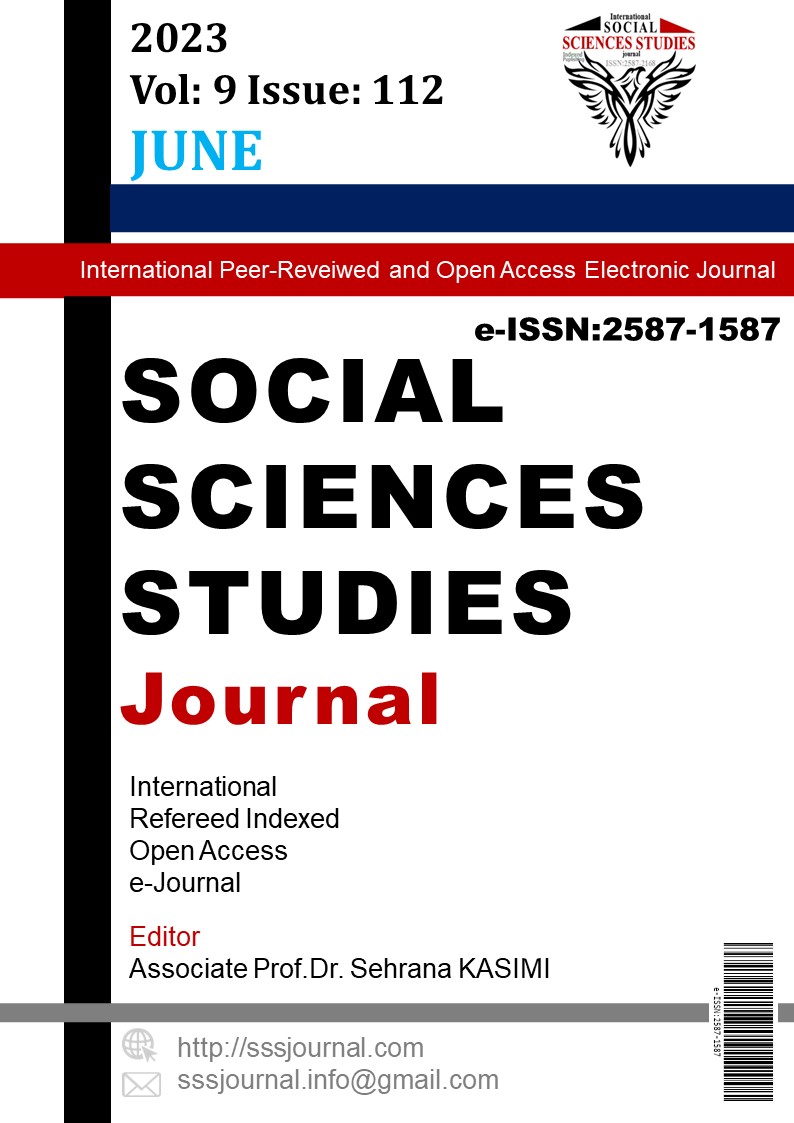Author :
Abstract
Bu araştırmada TRT repertuvarında yer alan 83 adet kırık hava formunda Kastamonu türküsünün usul olarak yapıları analiz edilerek yöre müziğinin ritmik olarak karakteristik özelliğinin ortaya konması amaçlanmıştır.
Nitel araştırma yöntemlerinden yararlanılarak yapılan çalışmada örneklem grubu olarak seçilen TRT repertuvarında bulunan Kastamonu yöresine ait kırık havalar ayrıntılı şekilde incelenmiştir. Yapılan incelemelerde Kastamonu türkülerinin usul yapılarının “1- Tek bir ana usule sahip türküler”. “2- Tek bir birleşik usule sahip türküler”. “3- Birden fazla usul yapısını türkü içinde değişmeli olarak kullanan türküler” şeklinde tasnif edilebilir olduğu anlaşılmıştır.
Bu gruplamadaki türkülerden, “tek bir ana usule sahip türküler” Kastamonu türkülerinin % 43’ünü, “tek bir birleşik usule sahip türküler” Kastamonu türkülerinin % 36’sını, “birden fazla usul yapısını türkü içinde değişmeli olarak kullanan türküler” Kastamonu türkülerinin % 21’ini teşkil etmektedir.
Tek bir usule başlayıp biten türkülerde 2, 3, 4 zamanlı ana usuller ve 5, 6, 9 zamanlı usuller kullanılmış; ana usullerin üçerli şekillerinin kullanıldığı bir örneğe rastlanmamıştır. Yine “Tek bir birleşik usule sahip Kastamonu türkülerinde” 7 ve 8 zamanlı usule sahip bir türkünün bulunmadığı tespit edilmiştir. Kastamonu türküleri arasında tek bir usulle başlayıp biten karma usullü türkü örneği mevcut değildir. Karma usulün kullanıldığı türkülerde mutlak bir başka usul daha kullanılmıştır. Bu nedenle karma usul kullanılan türkü örnekleri “birden fazla usul yapısını türkü içinde değişmeli olarak kullanan ritmik yapılı türküler” grubundadır. Bu grupta birbirinden farklı yapıların var olduğu tespit edilmiş ve bu yapıların şu başlıklar altında gruplanabileceği anlaşılmıştır: 1- Birden fazla ana usulün değişmeli şekilde kullanıldığı türküler, 2- Ana usul ve birleşik usulün değişmeli şekilde kullanıldığı türküler, 3- Ana usul, birleşik usul ve karma usulün değişmeli şekilde kullanıldığı türküler, 4- Birden fazla birleşik usul değişmeli şekilde kullanıldığı türküler, 5- Birleşik usul ve karma usulün değişmeli şekilde kullanıldığı türküler, 6- Birden fazla karma usulün değişmeli şekilde kullanıldığı türküler. Elde edilen tüm bu sonuçlar göstermektedir ki, Kastamonu yöresi türküleri, Türk Halk Müziği’nde usul yapılarının çeşitliliği için örnek bir yöredir.
Keywords
Abstract
In this study, it is aimed to reveal the rhythmic characteristics of the local music by analyzing the rhythmic structures of Kastamonu folk songs in the form of 83 KirikHava in the TRT repertoire.
In the study, which was made by using qualitative research methods, Kirik Hava melodies belonging to Kastamonuregion in the TRT repertoire were selected as the sample group and were examined in detail. In the reviews carried out, it is seen that the tempo structures of Kastamonu folk songs are "1- Folk songs with a single main method". “2- Folk songs with a single combined style”. 3- It has been understood that folk songs can be classified as folk songs that use more than one tempo structure interchangeably.
Of the folk songs in this group, “songs with a single main style” account for 43% of Kastamonu folk songs, “songs with a single combined style” account for 36% of Kastamonu folk songs, “songs that use more than one method alternately in their song” and constitutes the 21% of Kastamonu folk songs.
In folk songs that start and end with a single tempo, 2, 3, 4 stroke main tempos and 5, 6, 9 stroke tempos are used; No examples were found in which triple forms of the main methods were used. Again, it has been determined that there are no folk songs with 7 or 8 rhythms in "Kastamonufolk songs with a single combined style".
Among the Kastamonu folk songs, there is not an example of a mixed style folk song that starts and ends with a single style. Another absolute method is used in folk songs in which the mixed method is used. For this reason, the examples of folk songs using mixed methods are in the group of "rhythmic folk songs that use more than one tempo structure alternately in a song". It has been determined that there are different structures in this group, and it has been understood that these structures can be grouped under the following headings: 1- Folk songs in which more than one main method is used interchangeably, 2- Folk songs in which the main and compound methods are used interchangeably, 3- Main, compound and mixed styles are used interchangeably. Folk songs in which the method is used interchangeably, 4- Folk songs in which more than one combined method is used interchangeably, 5- Folk songs in which the combined and mixed methods are used interchangeably, 6- Folk songs in which more than one mixed method is used interchangeably. All these results show that the folk songs of the Kastamonu region are an exemplary region in terms of the variety of tempo structures in Turkish Folk Music.
